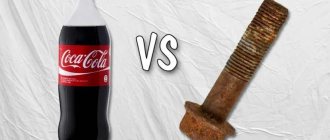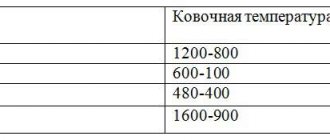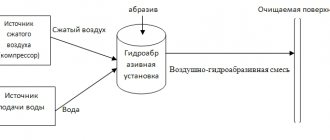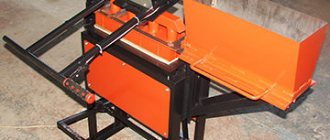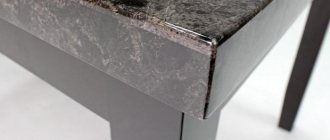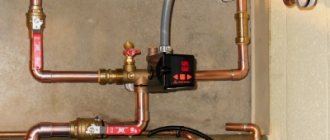09.23.2019 Author: VT-METALL
Issues discussed in the material:
- What is powder metallurgy and what are its advantages?
- What properties do metal powders have?
- What is the technological process for the production of metal powders?
- What products are made from metal powders
To produce high-quality parts intended for mechanical engineering, radio electronics and other industries, products made from metal powders are used. The technology makes it possible to form blanks, sinter and final process products (including calibration, additional compaction, finishing mechanical processing, heat treatment, etc.). Finished parts obtained in this way are characterized by high strength and compliance with the specified dimensions and configuration. In this article we will dwell in more detail on the qualities of metal powder products.
What is powder metallurgy and what are its advantages?
Powder metallurgy is used when it is not possible to create the required parts or materials using traditional metalworking methods, or the metal-powder production method turns out to be more economically feasible. Metal powder technology helps in the creation of composite materials with ribotechnical (sliding bearings, friction linings and disks), electrical (contacts, hard and soft magnetic products) and instrumental (hard alloys) purposes, as well as structural parts (bushings, rings, ratchets, gears, bearing caps, cams, etc.), etc.
Among the advantages of creating products from metal powders, the following should be noted:
- Reduced costs for final processing of the workpiece. In most cases, products made from metal powders have final dimensions and do not require additional machining or require minimal finishing to achieve high precision products. This technology is especially effective when creating parts with complex geometric shapes.
- Possibility of manufacturing parts with adjustable porosity (filters, catalysts, noise mufflers, etc.).
- The ability to create gradient and composite materials, the production of which is impossible using traditional technologies.
The main areas in which products made from mechanical powders are used are the automotive industry (which accounts for approximately 70% of the total volume of products), instrument making, and the production of household appliances.
In 1999-2000 The European Association of Powder Metallurgy conducted statistical studies and, after analyzing the collected data, concluded that the production of 1,000 tons of products from metal powders allows saving 1,500–2,000 tons of metal, freeing up 50 metal-cutting machines, reducing the labor intensity of work by 120,000 standard hours, increase labor productivity by more than 1.5 times. Another advantage of powder parts is their cost, which is on average 2-2.5 times lower than the cost of rolled metal products.
VT-metall offers services:
In 2000, metalworking enterprises around the world (with the exception of enterprises in the CIS countries) produced more than 700,000 tons of products made from metal powders. The range of parts created using this technology has expanded, and it has become possible to produce engine connecting rods, bearing caps, gearbox synchronizer rings, rotary oil pumps, valve seats, camshaft cams, automatic transmission units, etc. from cermets.
We recommend articles on metalworking
- Steel grades: classification and interpretation
- Aluminum grades and areas of their application
- Defects in metal products: causes and search methods
With the development of this metalworking industry, the quality of raw materials is improving, thereby improving the density and strength of finished products and materials; shapes become more complex and the dimensional accuracy of parts increases; the mechanical and functional characteristics of the finished product are improved.
The solution to the problems posed to the industry is facilitated by the creation of equipment with high molding accuracy and increased productivity, and the discovery of new technological processes for the production of products from metal powders.
Today, this branch of metalworking allows not only to save resources, but to effectively create materials with unique properties, which is impossible when using traditional methods of working with metals.
History and opportunities
Powder metallurgy existed in Egypt in the 3rd century BC. e. The ancient Incas made jewelry and other artifacts from precious metal powders. Mass production of powder metallurgy products begins in the mid-19th century. In 1826, Pyotr Grigorievich Sobolevsky and Vasily Vasilyevich Lyubarsky developed a method for refining raw platinum and turning it into malleable metal.
Powder metallurgy developed and made it possible to obtain new materials - pseudo-alloys from non-fused casting components with controlled characteristics: mechanical, magnetic, etc.
Powder metallurgy products are used today in a wide range of industries, from automotive and aerospace to power tools and home appliances. Technology continues to evolve.
Properties of metal powders
The technological suitability of metal powders, like any other materials, is determined by their standard characteristics, including:
- pycnometric density , depending on the chemical purity and porosity level of the powder;
- bulk density , which is understood as the mass of powder obtained by freely filling a container of a given volume;
- fluidity of powders , determined depending on the speed of filling a container of a certain volume (this parameter is significant because it affects the performance of subsequent pressing);
- plasticity , which is understood as the ability of a powder to take and maintain a certain shape.
Regardless of how the metal powder is obtained, its further processing is carried out through pressure and the use of special molds.
Products made from metal powders are given shape by pressing using molds, rolling and slip molding.
The slip molding technology is similar to mold casting; it is used to produce bushings, axles, fittings, rollers, etc.
Centrifugal spraying of a rotating melt jet
The vertically flowing jet of melt is rotated at a speed sufficient to destroy the jet by centrifugal forces. The melt from the crucible under an inert gas pressure of up to 3 MPa is fed into a nozzle with a screw swirler. The melt swirls and, upon exiting the nozzle, under the action of centrifugal forces, is transformed into a thinning hollow cone, breaking up into small drops, which solidify and are collected in a collector. The main advantage of this method is the lower consumption of inert gas for atomization than with gas atomization, since in this case the gas is consumed only to create pressure in the melt. When sputtering aluminum, a powder larger than 100 microns with a specific surface area of 100 cm2/g was obtained. The method has been tested on a laboratory scale.
Technological process for the production of metal powders
Before starting the production of metal-ceramic parts, it is necessary to produce powders. Differences in fractions and sizes of finished crushed particles are due to different production methods.
Methods for producing powders are divided into two large groups:
- The basis of physical and mechanical methods for the production of metal powders is the grinding of solid or liquid metal particles mechanically. This group of technologies combines processing due to static and impact loads.
- When using chemical-metallurgical methods, the phase state of the starting material is changed. Modification is achieved through the reduction of oxides and salts, electrolysis, and thermal dissociation of carbonyl compounds.
Obtaining metal powders is possible in one of the following ways:
- Sharov . In this case, crushing and grinding of metal scraps and shavings occurs using a ball mill.
- Vikhrev . In this case, in special mills, an air flow is pumped through pumps, under the influence of which metal particles collide with each other. The grains of the finished powder are saucer-shaped. The quality of the finished material is very high.
- Using special crushers that crush metal particles due to the impact of a falling load.
- Spraying . This method is suitable for working with low-melting metals. The liquid alloy is sprayed using a stream of compressed air and then crushed using a rapidly rotating disk.
- Electrolysis . Electric current is used to restore metal. As a result, the fragility of the metal increases, which makes it possible to grind it in a mill to a powdery state. The finished grains have a dendritic shape.
1. Physico-mechanical methods.
To obtain powder with the required fractions, centrifugal mills are used.
The intermediate stage is primary grinding, for which cone and roller crushers are used, which allow the metal to be crushed to particles no larger than 1 cm in size.
Depending on the technology used, the process takes from one hour to three to four days. If it is necessary to speed up production, vibrating mills are used.
The grinding process with the help of such mills is more intense, since cutting forces are applied, and an alternating voltage is also created. The size of the resulting grains varies from 0.009 to 1 mm.
Increasing the productivity of the process of grinding metal particles is facilitated by liquid action, due to which the metal does not atomize. In this case, the volume of liquid used is about 40% of the mass of the substance being processed.
Carbide particles are crushed using centrifugal mills. The disadvantages of this type of mill include the frequency of operation.
Using physical and mechanical methods, highly plastic non-ferrous metals cannot be crushed. To work with plastic materials, vortex mills are used, which crush particles by striking each other.
2. Chemical-metallurgical methods.
The most common method of producing metal powders is the reduction of iron, carried out using ore oxides or scale, which is a product of hot rolling. In this case, the amount of gaseous compounds in the powder is important.
If their quantity is higher than the permissible norm, then the finished powder will be too brittle, which will not allow it to be further pressed. If the norm is exceeded, the excess gases are removed using vacuum treatment.
The simplest and cheapest method is the one based on spraying and granulation. To grind metal, jets of melt or inert gas are used, sprayed using nozzles. The temperature and pressure of the gas flow can be adjusted, and water is used for cooling.
High purity copper powders are most often obtained through electrolysis.
Vacuum spray
(USA) and “Spesimen” (France) developed a method of “vacuum atomization” of molten metals, in particular aluminum and copper.
The installation (Fig. 2.65) consists of two chambers connected to each other by a valve. In the lower melting chamber, the metal or alloy is melted in a vacuum, then gas (H2, Ar) is supplied into the chamber under pressure. The gas dissolves evenly in the melt, increasing its energy.
Rice. 2.65. Installation diagram for vacuum atomization of molten metals: 1 - crucible with melt; 2 - power supply to the induction furnace; 3 - inductor; 4 — outlet to the vacuum pump; 5 - spray chamber; b - shutter; 7 - pressure vessel; 8 - container for powder
A vacuum is created in the upper chamber; the gas contained in the melt is released from it at tremendous speed, the melt “boils” and splashes out to form a powder. Process productivity is 1000-1100 kg/h, particle size is finer than 50 microns, gas consumption is several m3 per hour.
The resulting powders are more technologically advanced than powders obtained by spraying with a jet of gas or water.
What products are made from metal powders
Technological methods for producing powders are very numerous and varied. Thanks to this, it is possible to manufacture products from metal powders with the desired properties and composition.
Powder metallurgy technology makes it possible to create innovative composite materials that cannot be produced by other methods. Powder coating of metal products allows for economical use of materials due to their lower consumption coefficient.
Today, such industries as instrument and mechanical engineering, radio electronics, and the manufacture of tools, including drills and cutters, cannot do without products made from metal-ceramic powders.
Today, the production of metal powder products is automated, and therefore the enterprise does not require highly qualified personnel. These factors reduce the cost of finished metal products.
If the porosity of the powders is within normal limits, then their corrosion resistance is similar to this indicator for parts produced by traditional methods.
Products made from metal powders are resistant to sudden temperature changes, which determines the scope of their use.
- Details of friction units.
Due to their porous structure, products made from metal powders retain lubricants well.
That is why metal powder materials are used for the production of parts subject to increased friction during operation (sliding bearings, guide bushings, liners, electric motor brushes).
Because powder bearings have a porous structure, they can be impregnated with lubricants. Subsequently, the lubricant will begin to reach the surface of the bearing and transfer to the contacting parts. Such bearings are called self-lubricating.
They have the following advantages:
- efficiency (reduce lubricant consumption);
- wear resistance;
- savings on materials (iron is used instead of expensive bronze and babbitt).
The porosity of products during their manufacturing process can be enhanced by adding graphite, which is characterized by excellent lubricating properties, to metal powders. Bearings containing a high percentage of graphite do not require lubrication at all.
- Composite materials.
High-tech machines and equipment are equipped with parts and elements made from composite materials. The development of high technologies has entailed the active development of metal powder production. Unlike alloys, composite materials can be composed of various components, both metallic and non-metallic.
Using traditional metalworking methods, for example, smelting in metallurgical furnaces, tungsten and copper compounds cannot be obtained. The production of component materials helps solve this problem.
In order to make composite materials, the necessary components are simply mixed together, then pressed into the desired shape using a press, and then sintered.
Among composite materials, nuclear fuel can also be noted.
- Hard alloys.
Thanks to modern technologies, it is possible to obtain carbide products by adding carbide inclusions to their composition. It is no secret that the higher the carbon content in a metal, the harder it is.
Carbide increases the viscosity of powders without affecting its strength characteristics. Metal-ceramic parts are characterized by increased wear resistance, therefore cutting tools, carbide dies and punches are made from them, with the help of which sheet metal stamping is performed.
- Contact materials.
Metal ferromagnetic powders are also used to create electrical contact materials, i.e. electrical contacts, without which the production of electronic and radio engineering parts is impossible.
It is possible to use metal powders in other areas.
Due to their resistance to high temperatures, the powders are optimal for the production of various brake mechanisms. To increase heat-resistant qualities, chromium, nickel and tungsten are added to metal ceramics.
To produce the vast majority of modern magnetic products, metal powders are used. Thanks to innovative technologies, iron can be combined with various types of silicates.
Products made from metal powders are used to create filter devices for gases and flammable substances.
Pressing
The essence of the pressing process is the tight connection of metal powder particles with each other. The operating pressure of a mechanical press ranges from 1 to 6 thousand kg per square centimeter.
Products obtained by pressing do not have high strength characteristics. Therefore, they require heat treatment, which consists of sintering powders. During the melting process, metal particles form strong interatomic bonds with each other, making the part homogeneous in its structure.
It is worth noting that often the pressing and sintering operations are combined into one - hot pressing.
Moreover, heating in this case is carried out with high-frequency currents. The production of parts from powders by hot pressing significantly reduces the time spent on their production.
This factor allows you to save energy resources and reduce the cost of production.
Technologies for obtaining modern materials
What is the material? A material is a substance (a mixture of substances) that is used for the manufacture of products, construction or the creation of any material goods. Unlike raw materials, materials usually mean products that have undergone preliminary (industrial) processing.
Materials can be basic and auxiliary. Basic materials are those included in the finished product as its main component (for example, flour in the production of bakery products). Auxiliary materials are those that are used to give the product certain properties (salt, dyes) or contribute to the normal flow of the production process.
Metal cutting
The production of powders by metal cutting is used very rarely in practice. Powders are obtained during machine processing of compact metals, selecting a cutting mode that ensures the formation of particles rather than drain chips.
In this case, it is advisable to use the generated waste in the form of large chips for further grinding in ball, vortex and other devices, and small chips and sawdust with a powder particle size of about 1 mm can be used for the manufacture of products without additional crushing. In some cases, the use of this method for obtaining powder is almost the only one. First of all, this applies to those metals that are very reactive towards oxygen, especially in a state of high dispersion. For example, magnesium powder is obtained using this method.
